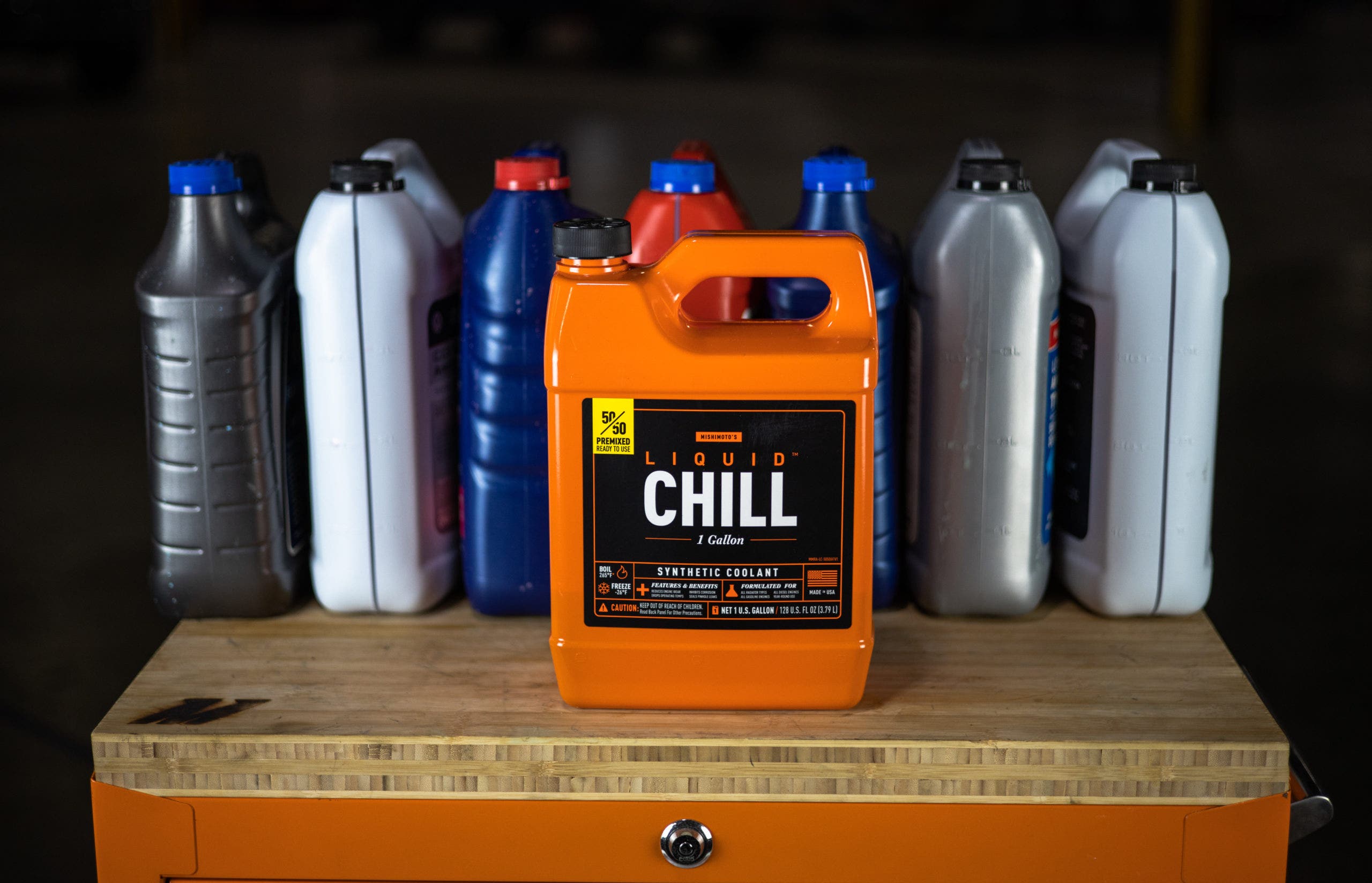
Chill Out - Coolant Basics and why not to Mix them
Keeping your engine temperature in check is essential to your vehicle running at peak performance. Overheating can lead to gasket failures or even warping and damage to critical engine components. Here at Mishimoto, we have plenty of experience keeping your engines cool through hardware, but we rarely dive into the coolant running through the heat exchangers and cooling passages.
The mixing of these various coolant makeups is often debated since some play nice with each other, while others will cause trouble within your cooling system. Before we get into that, let's dive into the different coolant makeups.
IATs and OATs and HOATs, Oh my!
Generally, the different coolants are signified by what color the coolant is dyed. That simplifies the purchasing process by indicating a specific chemical compound that will work best for your vehicle. Most of the coolant's makeup is distilled water, but it's mixed with a concoction of products to prevent freezing in the winter, provide thermal protection, and inhibit corrosion throughout the engine. The corrosion inhibitors are the main reason for the different blends.
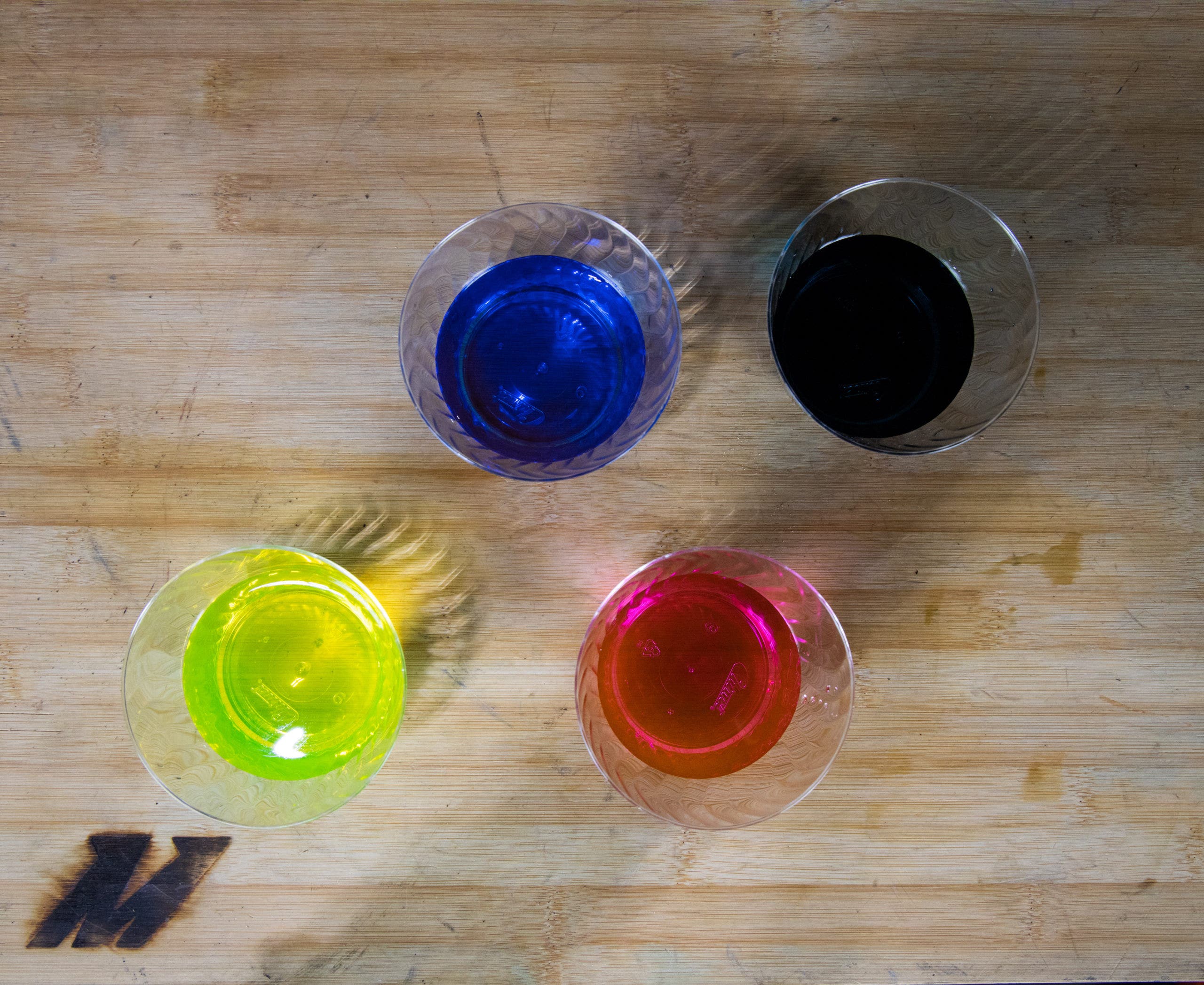
We start with the inorganic acid technology or IAT. This solution uses a combination of phosphates and silicates to prevent your engine from rusting from the inside out and is typically that classic green color. IAT coolant is the oldest form of coolant technology. The tag team of silicates and phosphates coat the coolant passages that prevent the water and other chemicals from eating away at the block. The downside is that these acids break down over time, meaning that the coolant would need to be changed relatively often.
In the late 1990s, manufacturers wanted a more reliable coolant that worked with other internal component materials, so along came organic acid technology or OAT. Some of you might know it more as Dex-Cool. The color will vary from orange to yellow to red to even pink or purple, depending on your vehicle's manufacturer and the origin region of your car or truck. The base of OAT coolant is the same ethylene glycol as IAT, but it uses carboxylate acids instead of phosphates or silicates for corrosion inhibitors. Carboxylate acids create a chemical bond with the metals inside the engine block rather than just sitting on top. This process has a more lasting effect and increases the service interval by almost five times the length.
There are cases when the manufacturer blends some of the old technology with the new to increase protection. This mixture is a hybrid organic acid coolant, or HOAT, where either phosphate or silicate is added to the solution. In Europe, the preference is for silicates since phosphates cause scaling when reacting to certain minerals in the water. At the same time, Asian manufacturers have had trouble with silicates causing poor gasket sealing.
Coolant Mixologist
Generally speaking, your coolant system shouldn't be a cocktail, and we recommend using what is suggested in your owner's manual or top off with distilled water in a pinch since that's most of your coolant's makeup to begin with. There is a reason for not mixing your coolant types, and it might just be easier to show you.
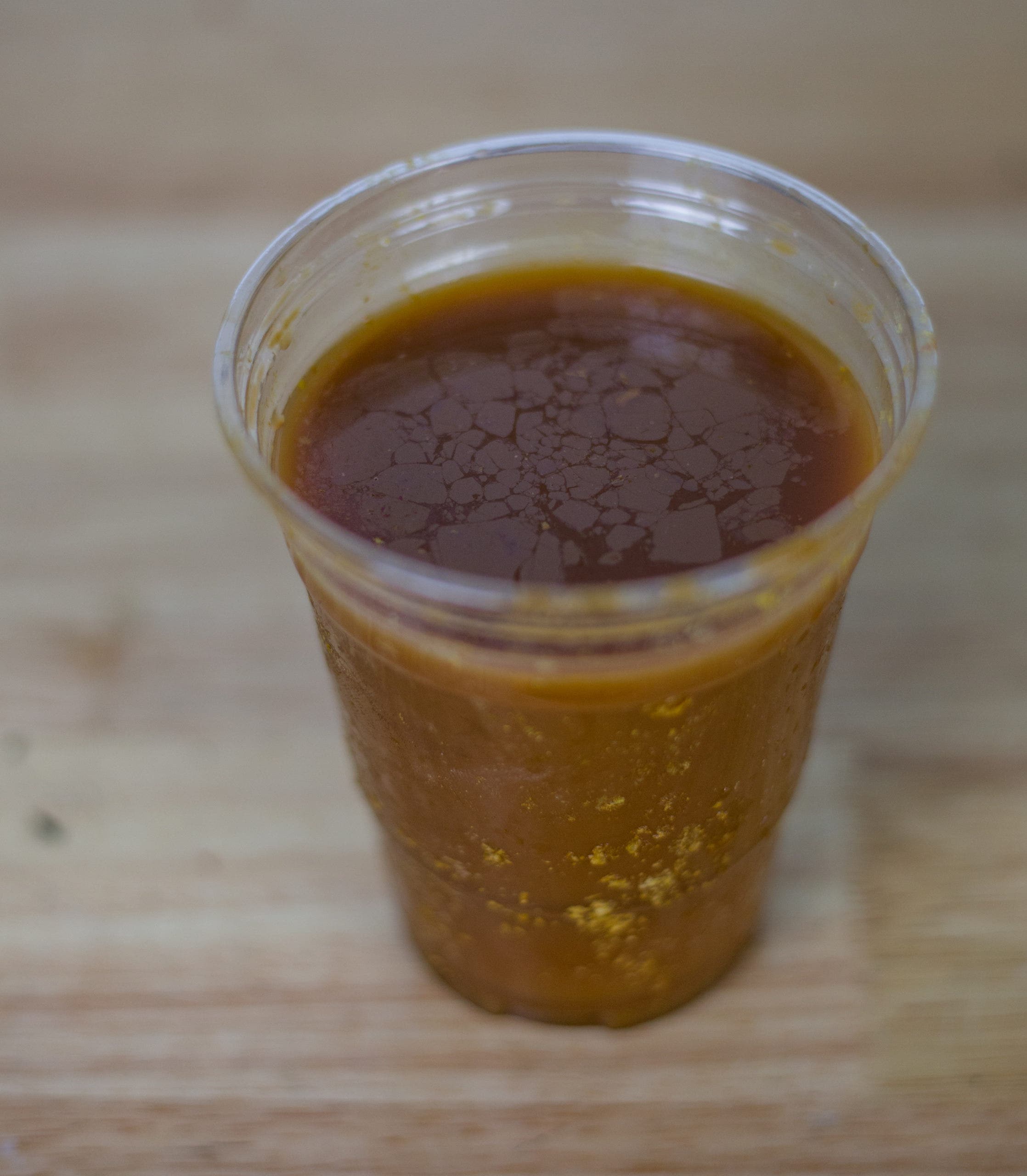
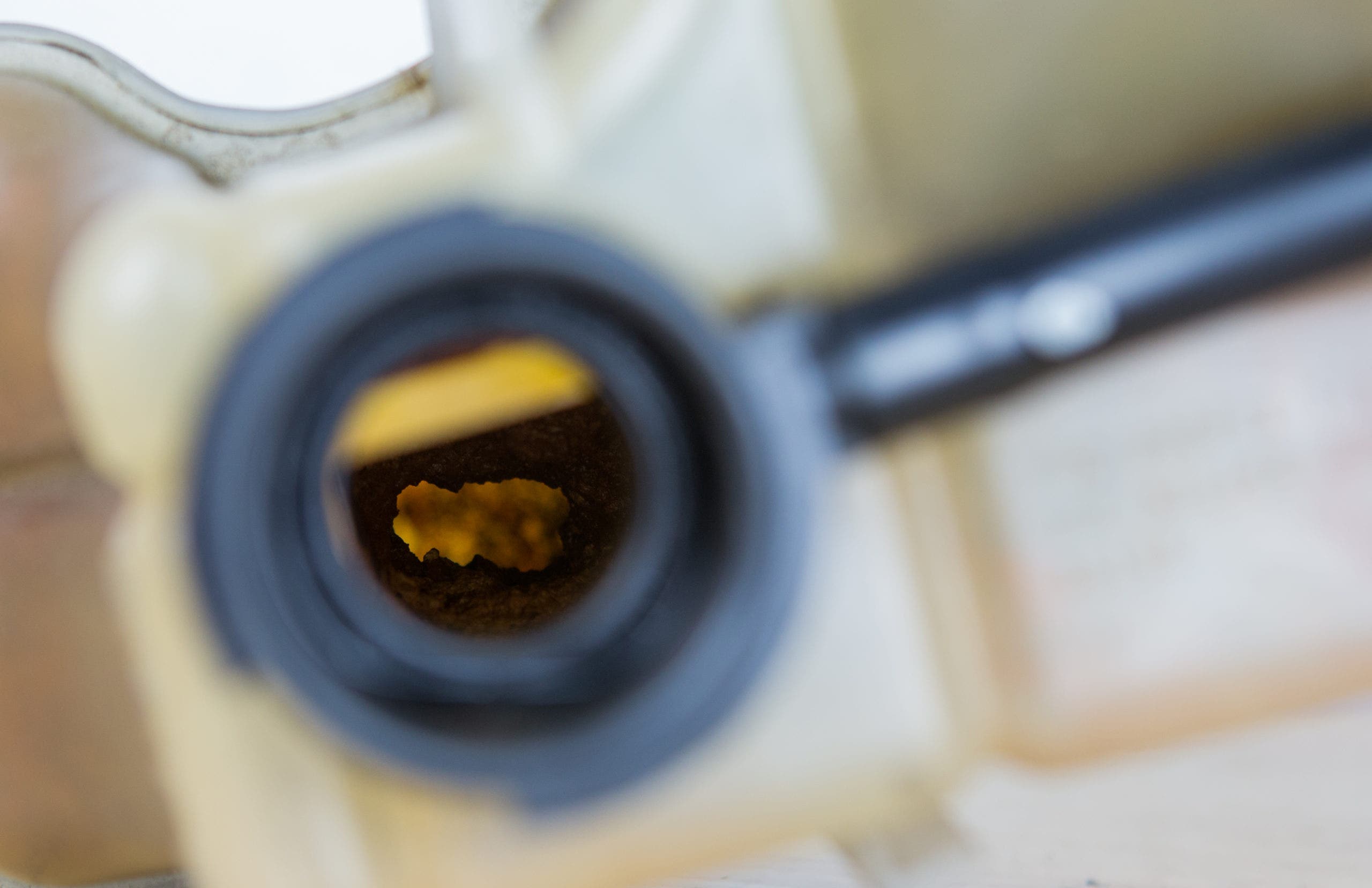
This is the outcome of mixing two different compounds that we witnessed firsthand on a donor vehicle. The corrosion inhibitors used in the different types of OATs and IATs usually don't play well with each other. Or play too well, depending on how you look at it. What you see here is the production of a precipitate. Simply put, the chemical reaction between these two solutions creates a solid and turns the liquid into more of a gel. The product of this reaction slows the cycling of coolant through the system and can block the radiator tubes.
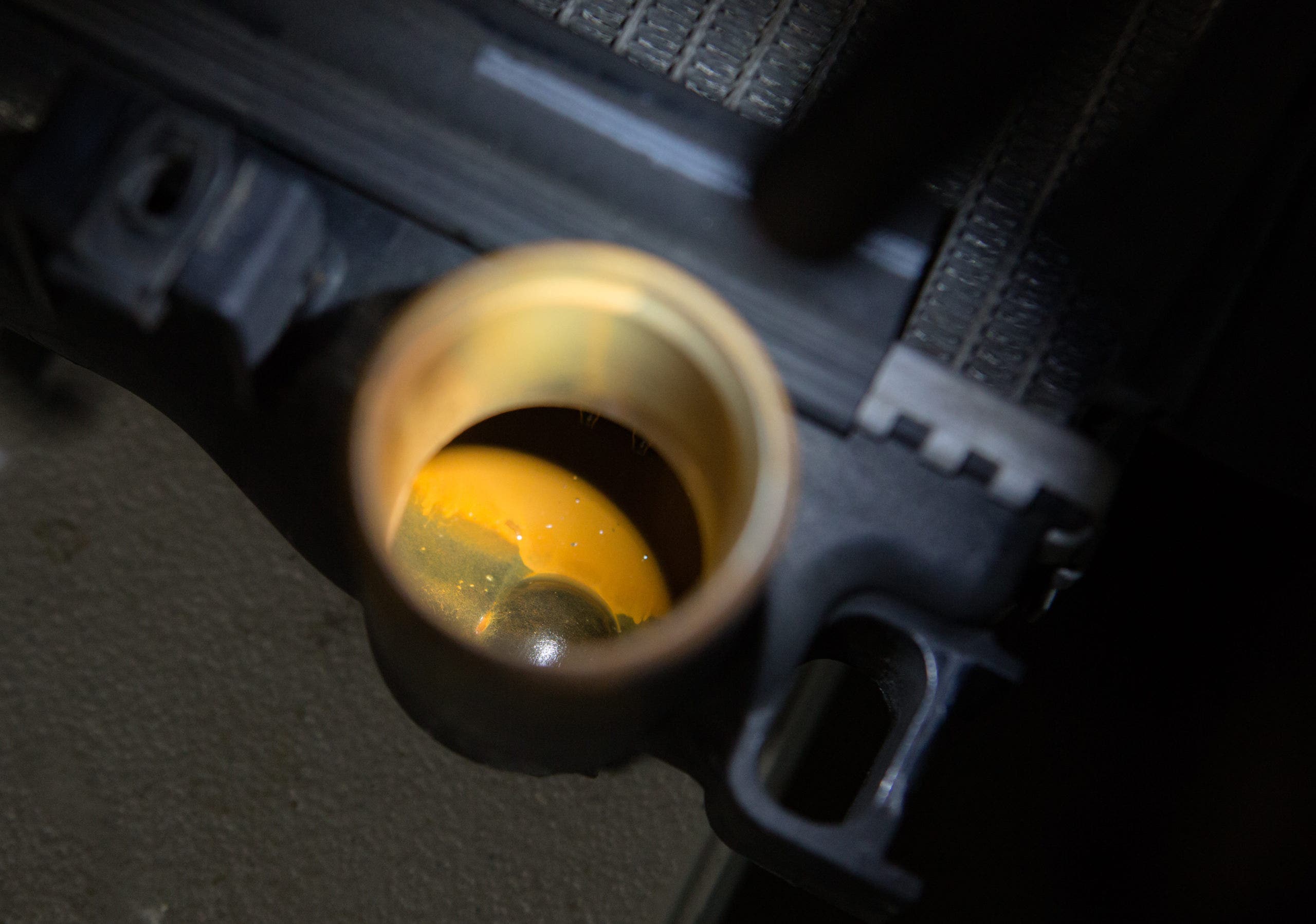
Make sure to check out our video for a closer look inside of this gunked up radiator:
Player Three has Entered the Game
"But what about universal coolants?" I'm sure is the question many of you might be asking by now. Our very own Liquid Chill is a universal coolant that does play very well with others and is known as a poly-organic acid technology coolant or POAT.
Our Liquid Chill is based on propylene glycol and is free from the silicates and phosphates that typically cause issues when mixing coolants. Our unique blend of additives also means that our Liquid Chill is suited for all types of engines and cooling components, so no corrosion, plugged-up radiators, thermostats, or other cooling components.
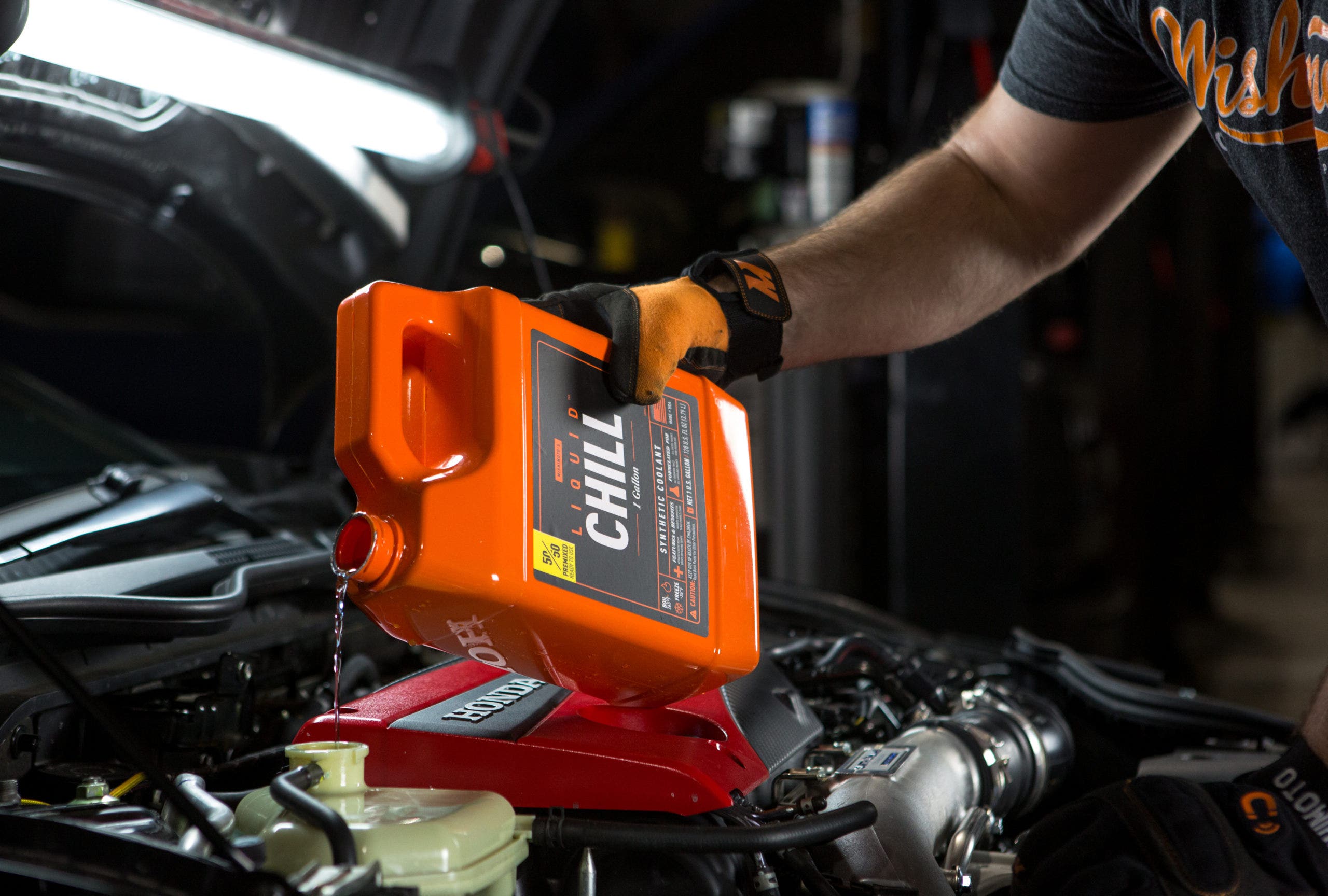
There's much more to coolant that meets the eye. Every manufacturer developed its own set of specifications to keep their engines running cool while warding off corrosion. Before topping off your cooling system, it's essential to double-check your vehicle's coolant requirements to avoid clogging up the components. When in doubt, distilled or de-ionized water is universal, along with our Liquid Chill lineup.
Mishimoto Liquid Chill

Thanks for Reading!
-Nick




